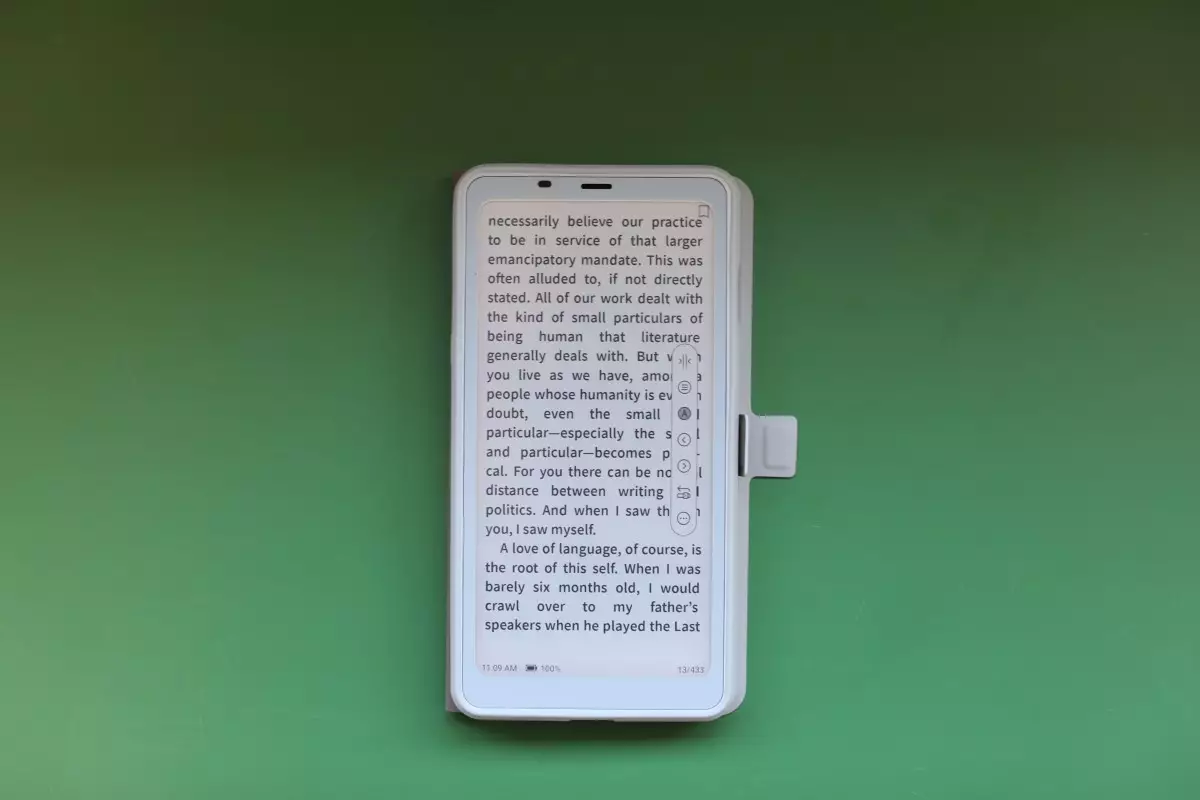The Palma e-reader from Boox presents an intriguing dichotomy in the world of consumer electronics. Positioned as a device promising to enhance focus by eliminating distractions, it sparks important conversations about our relationship with technology. However, its identity appears muddled, straddling the line between traditional e-reading and broader gadget functionality. This article delves into the Palma’s unique capabilities, its shortcomings, and the implications that arise from its ambition to be more than just an e-reader.
At first glance, the Palma’s description—marketed as a “distraction-free device”—seems appealing. In an age where our smartphones constantly bombard us with notifications, the notion of a product that helps reclaim focus resonates deeply. Yet, this ideal clashes with the reality of modern gadget dependency. The Palma aims to occupy the middle ground between technology and everyday life, echoing aspirations seen in other minimalist devices, such as the Light Phone. However, the fine line between “distraction” and “essential function” is highly subjective and varies widely from user to user.
The complexity emerges when examining the Palma’s capabilities. Unlike the Light Phone, which was designed purposefully with minimal features, the Palma exhibits a more hybrid identity. It possesses additional functionalities—such as camera, microphone, speakers, and Bluetooth connectivity—yet does not fully commit to being either an e-reader or a smartphone replacement. This hybridization leads to questions about its target audience: is it designed for users wanting an enhanced reading experience, or is it attempting to capture the features cherished by smartphone users without the associated distractions?
A crucial element in the Palma’s functionality is its ePaper display, which, while being user-friendly for reading, inherently limits the device’s versatility. The strengths of e-paper are well-documented—reading under bright sunlight and extended battery life are significant advantages. However, these benefits come at a cost; the refresh rate of e-paper is slower than that of traditional screens, which can hinder its use for applications outside basic reading functions.
While the device runs a version of Android that allows access to the Play Store, many useful features typically found in smartphones are notably absent. Users find themselves relying on creative workarounds—such as utilizing WhatsApp for voice communication, despite the lack of cellular capabilities—reflecting the unintended complexity of a device that seeks to simplify our lives.
Amidst the limitations, user creativity flourishes. The Palma’s design encourages experimentation, with users discussing methods to enhance its functionality through online forums and communities. Interesting conversations arise surrounding its individual features, such as the microSD slot for expandable memory but the absence of a SIM card slot, which leaves users exploring alternatives for connectivity and communication.
This user-led innovation is indicative of a device that may have misaligned its goals. The Palma seeks to foster an environment less conducive to distractions, yet the necessity for workarounds demonstrates how users might be forced to circumvent the limitations instead of enjoying seamless technology. The potential for innovation suggests a fertile ground for creative solutions, but it also raises concerns about how a product’s shortcomings can affect overall usability.
While the Palma’s hybrid design has merit, a stripped-down version focused purely on the e-reader aspect could better serve a significant segment of consumers seeking simplicity. A more streamlined Palma could shed extraneous features to deliver a powerful reading experience at a more competitive price point.
With an attractive and slim design, the potential exists for the Palma to become an essential travel companion for readers. Easy portability is a primary concern among avid readers—apprehensions about packing a larger device like a Kindle while traveling highlights this need.
Given Boox’s track record of producing quality e-readers, a device devoted solely to reading—this emphasis on core functionality over flamboyant features—could effortlessly cater to the desires of tech-savvy bookworms.
The Palma represents an innovative attempt to reconcile the complexities of our digital lives with the simple joy of reading. It grapples with its identity, caught between being a multi-functional gadget and a dedicated e-reader. While its efforts to incorporate diverse features can be appreciated, they also complicate the user experience. For the Palma to realize its full potential, a tighter focus on core functionalities could resonate with consumers searching for clarity amid an ever-evolving technological landscape. Ultimately, the Palma’s journey embodies a broader consideration of how we engage with technology in our quest for balance and simplicity.

